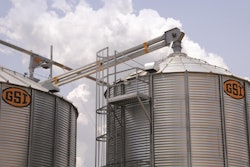U.S. soybean and corn supplies in September will be smaller than previously forecast due to a reduced estimate of last fall’s harvest, the government said on Tuesday.
Reuters reports the U.S. Agriculture Department placed the 2020/21 domestic soybean ending stocks outlook at 140 million bushels, down from its December forecast for 175 million, and corn ending stocks at 1.552 billion bushels, down from 1.702 billion in December.
Read the full report here.
WHEAT: The outlook for 2020/21 U.S. wheat this month is for stable supplies, higher domestic use, unchanged exports, and lower ending stocks. Feed and residual use is raised 25 million bushels to 125 million on lower-than-expected second-quarter stocks reported in today’s NASS Grain Stocks report. Seed use is up 1 million bushels to 63 million, reflecting 2020/21 wheat planted area released today in the NASS Winter Wheat and Canola Seedings report. Projected 2020/21 ending stocks are reduced 26 million bushels to 836 million, down 19 percent from last year. The season-average farm price is raised $0.15 per bushel to $4.85 based on NASS prices reported to date and expectations for futures and cash prices for the remainder of the marketing year.
The 2020/21 global wheat outlook is for smaller supplies, increased consumption, higher exports, and reduced stocks. Supplies are lowered 1.6 million tons to 1,072.7 million on reduced production in China and Argentina more than offsetting an increase for Russia. China’s production is reduced 1.8 million tons to 134.3 million on the National Bureau of Statistics estimate. Russia’s production is raised 1.3 million tons to a new record of 85.3 million, based on estimates from Russia’s statistical agency Rosstat, surpassing the 2017/18 crop. Argentina’s production is reduced 0.5 million tons to 17.5 million on updated harvest results to date and this would be Argentina’s smallest crop in five years. World 2020/21 consumption is increased 1.8 million tons to 759.5 million, mostly on higher feed and residual use for China and the United States and greater food, seed, and industrial (FSI) use for Russia. Continued high domestic corn prices in China are expected to result in further wheat feed use as projected 2020/21 wheat feed consumption is raised 1.0 million tons to 25.0 million, up 32 percent from last year. Russia’s FSI consumption is raised 500,000 tons to 23.5 million with greater supplies.
Projected 2020/21 global trade is raised fractionally to 193.8 million tons on higher exports for Canada, the EU-27+UK, and India more than offsetting reductions for Russia and Argentina. Russia’s recently announced wheat export tax and grain export quota is expected to temper Russia’s exports in the latter stages of the marketing year when it is imposed in mid-February. Russia’s exports are reduced 1.0 million tons to 39.0 million while EU-27+UK exports are raised 500,000 tons to 26.5 million as the EU-27+UK is expected to gain from Russia’s export restraints. Canada’s exports are raised 500,000 tons to 26.5 million on a strong early export pace and the expectation of continued large shipments to China as its imports are also raised this month to 9.0 million. Projected 2020/21 world ending stocks are lowered 3.3 million tons to 313.2 million but remain record high with China and India holding 51 and 10 percent of the total, respectively.
COARSE GRAINS: This month’s 2020/21 U.S. corn outlook is for lower production, reduced corn used for ethanol, smaller feed and residual use and exports, and decreased ending stocks. Corn production is estimated at 14.182 billion bushels, down 324 million on a lower yield and slight reduction in harvested area.
Total corn use is down 250 million bushels to 14.575 billion. Exports are down 100 million bushels, reflecting sharply lower supplies and higher expected prices. Corn used for ethanol is lowered, based on data through November from the Grain Crushings and Co-Products Production report and weekly ethanol production during December as indicated by the Energy Information Administration.
Feed and residual use is reduced 50 million bushels to 5.650 billion, based on indicated disappearance during the September-November quarter. With supply falling more than use, corn stocks are lowered 150 million bushels to 1.552 billion. The season-average corn price received by producers is raised to $4.20 per bushel.
Sorghum production is estimated 2 million bushels higher as increased harvested area more than offsets a reduction in yield. Food, seed, and industrial use is lowered 10 million bushels on lower sorghum used for ethanol. Exports are raised 15 million bushels reflecting larger exports to China.
Global coarse grain production for 2020/21 is forecast down 9.3 million tons to 1,438.5 million. This month’s foreign coarse grain outlook is for lower production and consumption, and smaller ending stocks. Foreign corn production is reduced with declines for Argentina and Brazil more than offsetting increases for China and India. For Argentina, dryness during December reduces yield prospects for early-planted corn in key central growing areas. Brazil is lowered reflecting reduced yield expectations for first-crop corn in southern Brazil.
Major global coarse grain trade changes for 2020/21 include reduced corn imports for the EU-27+UK, Mexico, Iran, Vietnam, Colombia, Chile, Egypt, Malaysia, Peru, and Saudi Arabia, with a partly offsetting increase for China. For 2019/20, Argentina’s exports for the marketing year beginning in March 2020 are lowered based on the shipment pace to date. Foreign corn ending stocks are lower, mostly reflecting reductions for Brazil and the EU-27+UK. Global corn stocks, at 283.8 million tons, are down 5.1 million.
OILSEEDS: U.S. oilseed production for 2020/21 is estimated at 122.4 million tons, down 1.25 million from the previous report. Smaller soybean, peanut, and cottonseed crops are partly offset by an increase for canola and sunflower seed. Soybean production is estimated at 4.135 billion bushels, down 35 million led by reductions for Minnesota, Iowa, and Kansas.
Harvested area is estimated at 82.3 million acres, up slightly from the previous report. Yield is estimated at 50.2 bushels per acre, down 0.5 bushels. With higher imports and slightly higher beginning stocks, soybean supplies are down 14 million bushels from last month. The soybean crush forecast is raised 5 million bushels to 2.2 billion, reflecting improved prospects for soybean meal exports with a lower export forecast for Argentina. The soybean export forecast is raised 30 million to a record 2.23 billion bushels. With lower supplies and increased use, ending stocks are projected at 140 million bushels, down 35 million from the previous forecast.
Soybean and soybean product prices are forecast higher this month. The U.S. season-average soybean price for 2020/21 is projected at $11.15 per bushel, up 60 cents as cash prices in Central Illinois reach 6-year highs. The soybean meal price is projected at $390 per short ton, up 20 dollars. The soybean oil price is forecast at 38.5 cents per pound, up 2.5 cents.
Foreign 2020/21 oilseed production is relatively unchanged, with higher sunflower seed mostly offset by lower soybean, cottonseed, peanut, rapeseed, and palm kernel output. Sunflower seed production is increased 0.5 million tons to 13.5 million for Russia based on recent government estimates. Soybean production is lowered 2 million tons to 48 million for Argentina and 0.2 million to 2.2 million for Uruguay, reflecting dry weather conditions in December and early January. Mostly offsetting lower South American soybean production is a 2.1-million-ton increase to 19.6 million for China on recent government data. Global soybean stocks are lowered 1.3 million tons to 84.3 million, with lower stocks for Argentina and the United States that are partly offset by higher stocks for China.
Read the full USDA WASDE Report here.


















